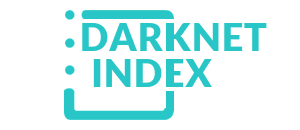The darknet, also known as the dark web, is a concealed section of the internet that's inaccessible via standard search engines. You can only access it using special software, settings, or authorization. This area comprises websites and content that are purposely kept hidden from public view.
Accessing darknet requires using Tor Browser, a special web browser that routes your internet traffic through a global network of relays managed by volunteers. This way, it becomes very difficult to trace which websites you're visiting, and these sites won't know where you are located.
When visiting the dark web, use a secure browser like Tor, do not reveal any of your personal information, and don't open suspicious files or links to stay safe.
The Darknet is often utilized for secure communication, discreet information or file sharing, anonymous research without identity exposure, and occasionally for engaging in illicit activities. It is also recognized for hosting underground black markets(darknet markets), whistleblowing platforms, and discussion boards that champion freedom of speech.
While accessing Darknet Markets themselves is typically not against the law in most places, engaging with illicit goods within them is generally considered a crime. On the other hand, some people might visit Darknet Markets for lawful purposes such as research, journalistic work, or simply to explore online communities. It's essential to know the local laws regarding online activities, and be cautious when using these platforms to avoid any potential issues.
Understanding the Recent Tor De-Anonymization Case: What You Need to Know
The digital landscape is constantly evolving, and with it comes the pressing need for secure and private browsing solutions. Recent events have drawn attention to the vulnerabilities within the Tor network, specifically regarding the de-anonymization of a user operating an old version of the Ricochet application. This blog post serves as a response to investigative reports on this issue, reflecting on the implications for Tor users and the ongoing commitment of the Tor Project to uphold user privacy.
The Incident: De-Anonymization Explained
In an alarming revelation, an investigation suggested that a Tor user utilizing an outdated version of Ricochet (a now-retired application designed for anonymous communication) was the victim of a targeted law enforcement operation leading to full de-anonymization. This breach was reportedly facilitated through a guard discovery attack, enabled by the user’s failure to use updated software protections introduced in later versions of Ricochet, including Ricochet-Refresh.
At the heart of this attack was a lack of robust defensive features. The critical Vanguards-lite tool, introduced in Tor 0.4.7, offers protection against timing analysis attacks, which can reveal a user's online habits and link them to a specific guard relay. Unfortunately, this user was exposed due to their reliance on an obsolete version of the software, bypassing vital security measures established after 2022.
The Role of the Tor Project
As custodians of the Tor network, the Tor Project has prioritized user safety and demanded clarity regarding the recent events. Unlike other organizations, such as the Chaos Computer Club (CCC), who had access to relevant documentation, the Tor Project received only superficial information about the attack. This lack of access complicates their ability to provide thorough guidance or risk assessments to Tor users, relay operators, and the broader community.
The Tor Project emphasizes that understanding these incidents is crucial to enhancing security protocols. They are actively appealing for further details from anyone with insights on this case, encouraging contact via their dedicated security email.
The Resilience of the Tor Network
In light of this incident, it’s essential to reiterate that the Tor network remains robust and continues to be a leading solution for users seeking privacy online. The network is healthier than ever, benefiting from numerous technological updates. For instance, as of recent counts, over 2,000 exit nodes have been established, a significant increase from previous years. Such expansion facilitates efficient and secure access to the Tor network, mitigating risks associated with relay monopolization.
Additionally, the Tor Project has implemented processes to improve network health, actively working to remove malicious relays and enhance diversity among them. Recently launched initiatives, such as the Tor University Challenge, promote engagement and support for the network, while ongoing outreach efforts seek to bolster network bandwidth and security.
The Importance of Keeping Software Updated
For the vast majority of users, embracing updated software is a fundamental step in ensuring security. The Tor Project urges all users and relay operators to adopt the latest versions of software and tools to leverage advanced protections. The introduction of features like Vanguards-lite and Ricochet-Refresh underscores the critical need for users to stay informed and ahead of adversaries seeking to exploit vulnerabilities in outdated applications.
Conclusion: A Call for Community Engagement
The recent de-anonymization case serves as a stark reminder of the importance of vigilance within the online privacy community. While the Tor network remains a trustworthy solution for protecting user identities, collective effort is needed to ensure its continued success. The Tor Project invites anyone with information regarding potential vulnerabilities or security threats to come forward, as collaboration is key to fostering a safe digital environment.
In these uncertain times, it is imperative to recognize that while security challenges exist, the Tor network is equipped with the tools necessary to safeguard user privacy. Regular updates, community support, and ongoing education are essential to ensuring that the Tor Project can continue to provide a secure online haven for years to come.
